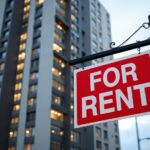According to ATTOM’s January 2025 U.S. Foreclosure Market Report, 30,816 U.S. homes had foreclosure filings, such as default notifications, scheduled auctions, or bank repossessions. This is a 7% decrease from a year ago but an 8% increase over the previous month.
“January showed a monthly increase in foreclosure filings that may in some part be the result of a normal post-holiday catch up of filings,” said Rob Barber, CEO at ATTOM. “It’s too early to know if 2025 will shift from the general 2024 trends of a continued decline in foreclosure activity. We will keep a close eye on the market to see how interest rates, inflation, employment shifts, and other market dynamics impact foreclosures in 2025.”
In January 2025, 2,973 U.S. houses were seized by lenders through completed foreclosures (REOs), up less than 1% from the previous month but down 25% from the previous year. This continued the downward trend of yearly REO numbers that has been observed in 11 of the previous 12 months.
Arizona (up 73 percent), Virginia (up 57%), South Carolina (up 55%), North Carolina (up 52 percent), and Tennessee (up 26 percent) were the states with the largest monthly rise in January 2025 among those with at least 50 or more REOs.
Among the 225 metropolitan statistical areas with a population of at least 200,000, that saw the greatest number of REOs included: Detroit, MI (164 REOs); Chicago, IL (148 REOs); Riverside, CA (141 REOs); New York, NY (84 REOs); and Philadelphia, PA (69 REOs).
Where Are the Highest Foreclosure Rates?
In January 2025, there were foreclosure filings in one out of every 4,618 housing units nationwide. Delaware had one foreclosure for every 1,839 housing units, Nevada had one for every 2,430 housing units, Indiana had one for every 2,459 housing units, Illinois had one for every 2,756 housing units, Utah had one for every 3,251 housing units, and Nevada had one for every 2,430 housing units.
Those major metropolitan statistical areas (MSAs) with a population greater than 200,000, with the highest foreclosure rates in January 2025 were Riverside, CA (one in every 1,786 housing units with a foreclosure filing); Elkhart, IN (one in every 1,821 housing units); South Bend, IN (one in every 1,821 housing units); Fresno, CA (one in every 1,859 housing units); and Indianapolis, IN (one in every 1,934 housing units).
Other than Riverside, Fresno, and Indianapolis, among the metropolitan areas with a population greater than 1 million, those with the worst foreclosure rates in January 2025 included: Las Vegas, NV (one in every 1,987 housing units); and Philadelphia, PA (one in every 2,042 housing units).
Are Foreclosures Increasing? Where?
Lenders started the foreclosure process on 20,994 U.S. properties in January 2025, up 8 percent from last month but down 4 percent from a year ago.
Those states that saw the greatest number of foreclosures starts in January 2025 included: Texas (2,654 foreclosure starts); California (2,443 foreclosure starts); Florida (1,898 foreclosure starts); Illinois (1,228 foreclosure starts); and New York (949 foreclosure starts).
Among those major metropolitan statistical areas with a population of at least 200,000, those with the greatest number of foreclosure starts in January 2025, included: Chicago, IL (1,168 foreclosure starts); New York, NY (977 foreclosure starts); Houston, TX (932 foreclosure starts); Philadelphia, PA (777 foreclosure starts); and Los Angeles, CA (652 foreclosure starts).
To read the full report, including more data, charts, and methodology, click here.








